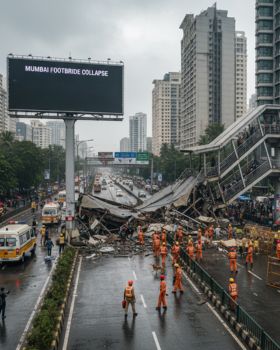
Disclaimer:
This blog post is intended for informational purposes only. The reference to the Chernobyl nuclear disaster is used solely as a historical case study to highlight the importance of contractor compliance in high-risk environments. SHEQ Network does not attribute fault or responsibility to any specific individuals or organizations involved in the original incident. The content should not be construed as legal, regulatory, or technical advice. Organizations are encouraged to consult relevant safety, compliance, and regulatory authorities before making any operational changes based on this information.
The Chernobyl nuclear accident of April 1986 stands as a defining moment in industrial history. This catastrophic event not only caused severe environmental damage but also exposed critical shortcomings in safety oversight and operational management. Among the many lessons from Chernobyl is the importance of rigorous contractor compliance system to minimize risks in complex, high-hazard environments.
Overview of the Chernobyl Nuclear Disaster
The disaster occurred during a safety test at Reactor 4 of the Chernobyl Nuclear Power Plant in Ukraine. A sudden surge of power led to an explosion and fire that released a massive amount of radioactive material into the atmosphere. The surrounding area, now designated as the Chernobyl Exclusion Zone, remains largely uninhabitable decades later.
Multiple factors contributed to the disaster, including design flaws, operator errors, and inadequate safety protocols. At the time, the involvement of contractors in maintenance and emergency activities lacked comprehensive oversight. Coordination difficulties and unclear responsibilities delayed critical actions during the crisis.
Contractor Involvement and Its Challenges
Contractors often play key roles in industrial settings, particularly for specialized maintenance or construction work. The Chernobyl disaster highlighted how contractor activities, if not managed carefully, can add layers of complexity to safety management.
In such environments, clear guidelines, documented procedures, and proper training are essential to ensure that all parties understand their roles and potential hazards. The absence of a structured contractor compliance system may contribute to miscommunication, procedural lapses, and increased risk exposure.
Chernobyl Disaster Effects on Safety Practices
The long-term consequences of the Chernobyl accident prompted global reflection on industrial safety standards. Organizations worldwide began emphasizing stronger safety cultures and more robust management systems.
One significant shift was the recognition of the need for improved contractor oversight. Ensuring contractors comply with safety regulations, have adequate qualifications, and follow standardized processes became a priority in high-risk sectors.
The Chernobyl Exclusion Zone: A Lasting Reminder
The establishment of the Chernobyl Exclusion Zone, encompassing a vast area around the plant, serves as a physical testament to the accident’s severity. The zone remains a focal point for scientific research and environmental monitoring.
This prolonged isolation underscores the importance of preventing such disasters through better planning and compliance. Proper management of all personnel, including contractors, is a crucial element in maintaining safe operations and avoiding long-term contamination.
The Role of Contractor Compliance Systems in Risk Reduction
Contractor compliance systems provide a framework for documenting contractor qualifications, authorizations, and safety requirements. While paper-based systems have historically been used, the complexity of modern projects often requires more efficient tools to manage documentation and communications.
Structured compliance frameworks help reduce operational risks by clarifying expectations and ensuring all contractors meet necessary standards before beginning work. Consistent processes and regular reviews foster accountability and improve overall safety performance.
Conclusion: How Contractor Compliance Systems Could Help
The lessons from the Chernobyl nuclear accident emphasize the value of a robust contractor compliance system in today’s industrial environments. Although no system can eliminate all risks, adopting structured compliance management could help organizations better track contractor qualifications, permits, and safety training — ultimately supporting safer work conditions.
A well-implemented contractor compliance system could help reduce risks by streamlining permit management and providing clear documentation of safety requirements. This could enhance coordination between contractors and management, helping organizations maintain compliance with regulatory standards more efficiently.
If your organization engages multiple contractors, especially in high-risk sectors, exploring modern contractor compliance software solutions could help improve your safety oversight without overcommitting to unrealistic guarantees.
🔗 Learn more at sheqnetwork.com and transform the way you manage contractor safety today.
👉 Ready to see it in action? Book your free demo here!
Ready to transform? Contact us today at info@sheqnetwork.com or call us at +353 21 4536034 for a personalized demo!




One Comment